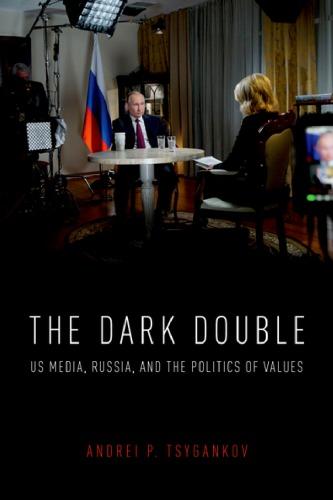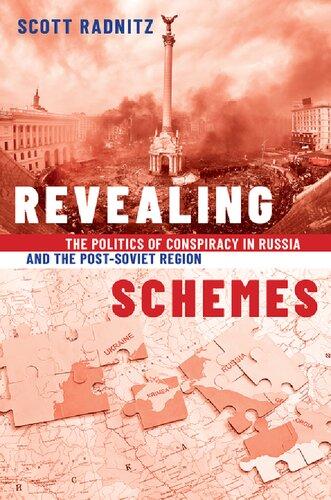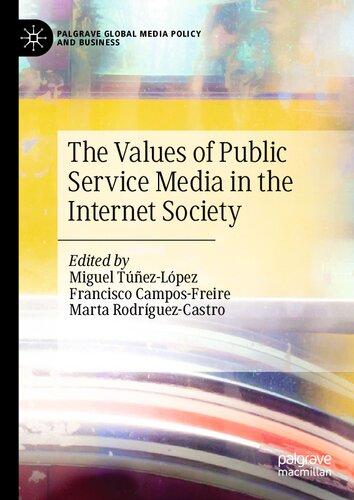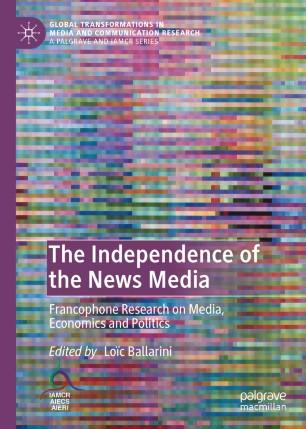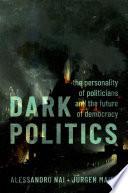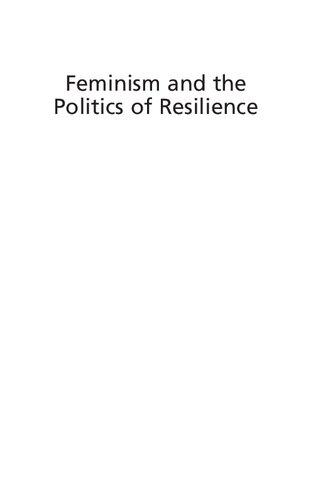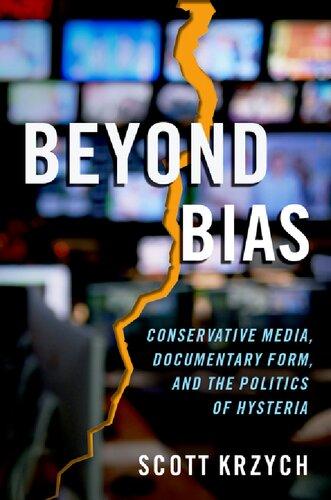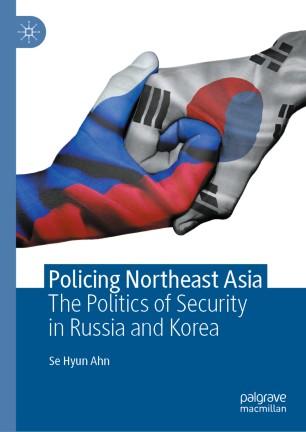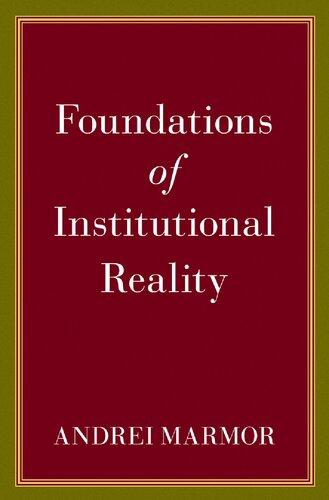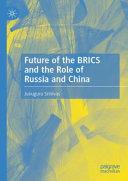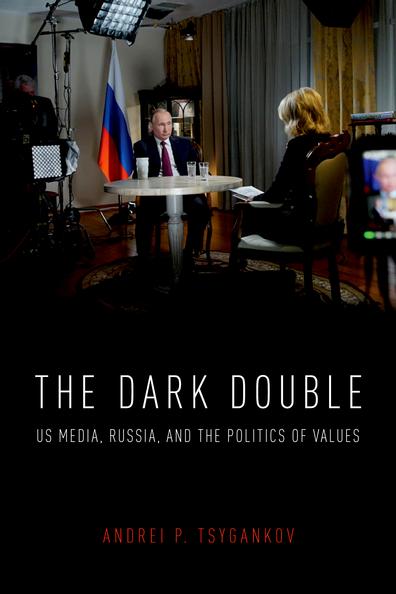Dark Double: US Media, Russia, And The Politics Of Values Andrei P.
Visit to download the full and correct content document: https://ebookmass.com/product/the-dark-double-us-media-russia-and-the-politics-of-v alues-andrei-p-tsygankov/
More products digital (pdf, epub, mobi) instant download maybe you interests ...
Revealing Schemes: The Politics of Conspiracy in Russia and the Post-Soviet Region Radnitz
https://ebookmass.com/product/revealing-schemes-the-politics-ofconspiracy-in-russia-and-the-post-soviet-region-radnitz/
The Values of Public Service Media in the Internet Society 1st Edition Miguel Túñez-López (Editor)
https://ebookmass.com/product/the-values-of-public-service-mediain-the-internet-society-1st-edition-miguel-tunez-lopez-editor/
The Independence of the News Media: Francophone Research on Media, Economics and Politics 1st ed. Edition Loïc Ballarini
https://ebookmass.com/product/the-independence-of-the-news-mediafrancophone-research-on-media-economics-and-politics-1st-ededition-loic-ballarini/
Dark Politics: The Personality of Politicians and the Future of Democracy Alessandro Nai
https://ebookmass.com/product/dark-politics-the-personality-ofpoliticians-and-the-future-of-democracy-alessandro-nai/
Feminism and the Politics of 'Resilience': Essays on Gender, Media and the End of Welfare Angela Mcrobbie
https://ebookmass.com/product/feminism-and-the-politics-ofresilience-essays-on-gender-media-and-the-end-of-welfare-angelamcrobbie/
Beyond Bias: Conservative Media, Documentary Form, and the Politics of Hysteria Scott Krzych
https://ebookmass.com/product/beyond-bias-conservative-mediadocumentary-form-and-the-politics-of-hysteria-scott-krzych/
Policing Northeast Asia: The Politics of Security in Russia and Korea 1st ed. Edition Se Hyun Ahn
https://ebookmass.com/product/policing-northeast-asia-thepolitics-of-security-in-russia-and-korea-1st-ed-edition-se-hyunahn/
Foundations of Institutional Reality Andrei Marmor
https://ebookmass.com/product/foundations-of-institutionalreality-andrei-marmor/
Future of the BRICS and the Role of Russia and China
Junuguru Srinivas
https://ebookmass.com/product/future-of-the-brics-and-the-roleof-russia-and-china-junuguru-srinivas/
The Dark Double
1
Oxford University Press is a department of the University of Oxford. It furthers the University’s objective of excellence in research, scholarship, and education by publishing worldwide. Oxford is a registered trade mark of Oxford University Press in the UK and certain other countries.
Published in the United States of America by Oxford University Press 198 Madison Avenue, New York, NY 10016, United States of America.
© Oxford University Press 2019
All rights reserved. No part of this publication may be reproduced, stored in a retrieval system, or transmitted, in any form or by any means, without the prior permission in writing of Oxford University Press, or as expressly permitted by law, by license, or under terms agreed with the appropriate reproduction rights organization. Inquiries concerning reproduction outside the scope of the above should be sent to the Rights Department, Oxford University Press, at the address above.
You must not circulate this work in any other form and you must impose this same condition on any acquirer.
CIP data is on file at the Library of Congress
ISBN 978–0–19–091934–4 (pbk.)
ISBN 978–0–19–091933–7 (hbk.)
9 8 7 6 5 4 3 2 1
Paperback printed by WebCom Inc., Canada
Hardback printed by Bridgeport National Bindery Inc., United States of America
We often perceive others, be they individuals, groups, or even the whole societies, as simply “good” or “bad.” Once this fateful decision is made, the rest is easy, for the “good” person or group can have only desirable social characteristics and the “bad” can have only reprehensible traits. And once such evaluative stability of social perception is established, it is extremely difficult to alter. . . .
[T]his tendency to regress to simple categories of perception is especially strong under conditions of emotional stress and external threat.
Uri Bronfenbrenner, “The Mirror Image in Soviet-American Relations,” 50.
This book grew out of several related projects on values, emotions, and the media’s role in shaping Russia’s and America’s international actions and perceptions.
In fall 2013, while on sabbatical from teaching, I researched the topic of Russia’s distinct “civilizational” values. My interests were well served by a two-month fellowship at the University of Helsinki’s Aleksanteri Institute, where I had the pleasure of stimulating interactions with colleagues, participated in the Europe-wide conference “Russia and the World,” and presented preliminary results of my research at the Aleksanteri seminar. At Vyacheslav Morozov’s invitation, I further presented my findings at the University of Tartu, Estonia. During October of the same year, I traveled to Moscow and was fortunate to interview some of those in Russia who intellectually prepared the country’s turn to distinct values, including by contributing to Vladimir Putin’s speeches since his election campaign in early 2012.
While developing my interest in values, I took part in a project on emotions in Russian foreign policy, which further influenced my thinking. The project was organized by Reinhard Wolf at Goethe University, Frankfurt am Main, Germany, Regina Heller at the University of Hamburg, Germany, and Tuomas Forsberg at the University of Tampere, Finland. I thank them all for inviting me into the project and giving me the opportunity to interact with
an excellent international group of scholars and expand my understanding of the role of emotions and moral beliefs in foreign policy.
During the 2014–2015 academic year I benefited from a grant at San Francisco State University to study US-Russia relations in the realm of values, which allowed me to concentrate on understanding the role of media in these relations. I gratefully acknowledge the financial support of the Office of Academic Programs and research assistance by Greg Sherman. Matthew Tarver-Wahlquist offered editorial assistance and helped with proofreading my work.
My understanding of media narratives was also assisted by participation in the project on digital Eurasia organized by Mark Bassin and Mikhail Suslov at Suderstrom University and Uppsala University, respectively.
In October 2015 I participated in the annual forum of the Valdai Discussion Club. I thank Andrei Bystritsky, Timofei Bordachev, Fyodor Lukyanov, Andrei Sushentsov, and all those involved in organizing this excellent conference for international affairs experts and for making my participation possible. I thank the mentioned individuals, as well as Sergei Karaganov, Andrei Kortunov, Olga Malinova, Boris Mezhuyev, Nikolai Rabotyazhev, Eduard Solovyev, Dmitry Suslov, Ivan Timofeev, Pavel Tsygankov, and Igor Zevelev for discussing with me some of the ideas expressed in this book.
While at the Valdai forum I was fortunate to ask Vladimir Putin a question about the role of values in US-Russia relations. Putin’s answer was illuminating in revealing his thinking on Russian “civilizational” values. In particular, I asked whether the growing polarization between the Russian image of the West as spiritually corrupt and the Western image of Russia as the oppressive neoSoviet autocracy reflect the inevitable struggle between culturally distinct entities. Putin’s reply confirmed the perception by the Kremlin of the superiority of Russian values, yet it also made clear
that in the view of the president the clash of values results less from cultural difference than from frequently lacking respect and recognition of each other’s autonomy:
If we look at ideas among our thinkers, philosophers, writers, they associate conflicts between Russia and the West with broad differences in worldviews. And they are partially correct. Russia’s worldview is based upon notions of good and evil, higher forces, and God’s will. However, the Western worldview—and I don’t mean it in derogatory way—is based upon individual interest, pragmatism, and pragmatic accommodation.
. . . It is hard for us to conduct a dialogue with those who are guided by ideas of messianism and exceptionalism because this means a radical departure from our common traditional values as founded on God-given equality. This does not mean that we cannot look for ways to interact. We will continue to do so.
. . . If some parts of American society feel friendship or love toward Russia, then they should explain to the rest of the society in the United States and to those who make political decisions that Russia ought to be treated with respect.1
I argue in the book that these two dimensions—cultural difference and lack of political respect for the other—shape and inform media perception and interstate competition in the realm of values. One should view those as mutually related and not isolated from each other. Cultural and historically developed perceptions shape and inform international relations but become sources of international conflicts in the context of (geo)political competition. Parts of several chapters draw on my previously published article “The Neo-Soviet Autocracy,” Politics, 2016, and books Russia’s Foreign Policy (Lanham, MD: Rowman & Littlefield, 2006), Russophobia: Anti-Russian Lobby and American Foreign
Policy (London: Palgrave, 2009), and The Strong State in Russia (New York: Oxford University Press, 2014). I thank the publishers for permission to use these materials in the book.
At Oxford University Press, I am especially grateful to David McBride for his faith in the project, guidance, and patience. I am also thankful to all those at the press performing editorial services and preparing the manuscript for publication.
In addition to the above-mentioned people, I greatly benefited from comments and reactions by anonymous reviewers. These comments and reactions were essential in improving the book. One reviewer provided especially penetrating commentaries and suggested that I write a follow-up on my Russophobia as a sustained critique of the US media’s perception of Russia.
The resulting book is less about special interest groups with anti-Russian agendas in the Washington establishment than about media narratives, frames, and confrontational presentations of Russia. The book is also about the media’s interaction with the US government and the official perception of Russia, which in the mid-2000s was more moderate than that of the media, but has since 2012 converged with the media’s hostile presentation of Russia. Gradually the US government that sought to increase political pressures on the Kremlin to change its foreign policy embraced the media’s confrontational perception of Russia as threatening American values.
While researching and writing the book, I took part in multiple conferences in the United States, Europe, Russia, and China and interacted with students and colleagues at my home university and outside. I appreciate all of their valuable insights and, needless to say, am alone responsible for the book’s content and conclusions.
My final word of gratitude is always to my family. My parents and my wife Julia have been a constant source of encouragement and inspiration. The increasingly conflictual relations between the
United States and Russia have had a deep impact on our hearts and minds. For many years Julia has been the first to patiently listen to my thoughts and impressions about Western political and media culture and to offer a common-sense reaction and support. I dedicate this book to her and to all those with the ability to cut through the fog of the media’s prejudices and to remain skeptical in these highly politicized times.
In transliterating names from the Russian, I have used “y” to denote “ы,” ‘ to denote “ь” and “ъ,” “yu” to denote “ю,” “ya” to denote “я,” “i” to denote “й” and “ий,” “iyi” to denote double “и,” “e” to denote “э,” “kh” to denote “х,” “zh” to denote “ж,” “ts” to denote “ц,” “ch” to denote “ч,” “sh” to denote “ш,” and “sch” to denote “щ.” I have also used “Ye” to distinguish the sound of “е” (such as “Yevropa”) in the beginning of a word from that in the middle of a word (such as “vneshnei”). I do not distinguish between “е” and “ё.” Spelling is retained in quotations.
The Dark Double
Values and Media in US-Russia Relations
In the course of history and international relations, each political community develops a particular system of values. Values are culturally and historically established beliefs about the appropriate organization of human institutions and foreign policy.1 Such beliefs are cognitive because repetitive social practices reinforce them as “truths.” Yet these beliefs are also deeply emotional because they set standards of right and wrong, serve as moral purposes,2 and constitute the commitment to uphold certain rules and principles. As Karl Manheim argued some century ago, “Politics as politics is possible only as long as the realm of the irrational still exists.”3 Overall, values act as lenses though which human communities form international perceptions and assess interests.
The US-Russia relationship is an appropriate ground for understanding the role that values and media play in both cooperation and conflict between two nations. Although these relations have been commonly analyzed as reflecting elites’ political and economic preferences,4 such preferences frequently reflect nationwide beliefs as accentuated and radicalized by different media systems. Scholars of ideas and national identity have studied how both countries’ foreign policies have expressed their historically developed
images, beliefs, and emotions,5 and how their interaction has resulted in misperceptions and biases in viewing each other.6
US-Russia Relations in the Realm of Values
Historically, Western nations have built competitive political systems with checks and balances and popular elections of public officials, whereas many non-Western societies, including Russia, have relied on a highly centralized and concentrated authority of the executive.7 During the Cold War, US authorities, media, and popular culture often presented this value difference in highly ideological terms—as an irreconcilable struggle between good and evil. Americans predominantly defined themselves through the Soviet “other,”8 viewing their country’s values as incomparably superior to and more legitimate than those of the USSR. America was the land of freedom and law, whereas the Soviet state was the oppressive empire that sought to dominate neighbors through force. As the historian David Foglesong wrote, ever since the late nineteenth century, influential circles in the United States have viewed Russia as their “dark double”—disrespectful of religious freedoms and property rights and an object of ideological transformation.9 The Bolshevik revolution in 1917 and the Cold War served to strengthen such perceptions of Russia in the West, reinforcing some of the old fears of the country.
Over the last thirty years, US-Russia relations in the realm of values went full circle from confrontation between “communism” and “capitalism” under the Cold War to convergence, growing divergence, and then a return to confrontation that a number of observers view as a new cold war.10
Following the Cold War, the United States ceased to view Russia and its values as threatening. Rather, the perception developed that the new Russia was becoming a part of the West,
embracing its ideas and governing principles. The end of the Cold War was interpreted as a victory of the West’s “universal” values. Russia’s leaders at the time themselves proclaimed their commitment to such values and sought to integrate with Western economic and security institutions. In their own words, Russia was becoming “normal” again and was eager to reunite with the West. For instance, Russia’s first foreign minister, Andrei Kozyrev, stated that the country’s system of values was to change, as Russia was to accept the priority of the individual and the free market over society and state and develop a “natural partnership” with Western countries.11
However, the contestation of values did not end with the Cold War. Although the old ideological dichotomy of “communism” and “capitalism” was past, the two nations were increasingly at odds in how they viewed each other. By the mid-1990s, it became clear that Russia was not converging with Western values. Although the country abandoned the old Soviet system, Russia also began to reproduce familiar strong-state principles with a highly concentrated authority of the executive and few checks and balances. The new 1993 constitution consolidated these principles by giving the president a level of power comparable with that of the Russian tsars. During the 2000s, Vladimir Putin continued to consolidate state power as the country’s new president, acting on the belief that “a strong state is not anomaly that should be gotten rid of . . . [but] a source and guarantor of order and the initiator and main driving force of any change.”12
In the United States, the perception of Russia as threatening American values appeared in the mid-2000s and was articulated by various groups in Washington and the mainstream media.13 Responding to multiple developments in Russia’s domestic and foreign policy, the US media introduced the narrative of a neoSoviet autocracy, according to which everything in the country
is controlled by Vladimir Putin, who acts from the perception of America as the main enemy. The narrative of a neo-Soviet Russia had existed in the United States since the Cold War end, but until the mid-2000s it did not dominate the media space. Now some seasoned observers were describing the new perception of Russia in the media “as a concerted effort to alienate Russia from the West”14 and displaying an attitude that was “more anti-Russian than was our policy toward Soviet communist Russia.”15
Leading US newspapers and TV networks presented a view of Russia in which an authoritarian police state was systematically eliminating political opposition, harassing foreigners and minorities, and aggressively vilifying the United States. Those developments inside Russia that did not fit this binary narrative received little media coverage. For instance, the mainstream media rarely reported on the revival of Christian faith in the country, struggles with corruption, or attempts to strengthen relations with neighbors and Western nations. By contrast, the American economic and political system was presented as incomparably superior and largely devoid of serious problems. With respect to practical relations with Russia, the media’s advice for US policymakers was consistently on the side of exerting pressures on the Kremlin and containing its international “expansion,” rather than proposing cooperation and joint solutions.16
These aspects of the media’s perception of Russia were reflected in US policy changes. Following the Cold War’s end, the United States shifted from a policy of containment toward one of integrating Russia on the West’s terms. Russia was expected to become a market economy and Western-style liberal democracy. During the 2000s, Russia was not yet perceived as a “threat,” but was no longer “a nation in hopeful transition.”17 A number of prominent US officials were increasingly worried about Russia getting “off track” and the country’s potential to oppose America’s
world leadership. After all, Russia was the only nuclear power capable of challenging the United States. Already in 2000 a prominent review of US defense policy argued that reducing the nuclear force was likely to be dangerous. Instead, the report favored the expansion of military capabilities.18
Despite a period when other priorities appeared to take center stage in the relationship, the move away from attempts to integrate Russia continued, with values increasingly becoming a central issue in bilateral relations. The White House did not prioritize the issue of values even when George W. Bush launched the global strategy of regime change following the Iraq War in 2003. Rather, the focus was on addressing vital issues of international security, including terrorism, nuclear arms control, and regional stability. During his first term, Barack Obama rarely commented on Russia’s domestic politics and concentrated on building relations with then-president Dmitry Medvedev in order to jointly tackle issues of nuclear arms control. However, after 2011 and especially following his election for the second term, Obama revised his perception of Russia by increasingly stressing the importance of values and pressing the Kremlin on human rights issues. The media narrative of Russia as a threat to Western values converged with the language of US officials, many of whom now viewed Russia as a hostile, undemocratic regime.
The new policy in Washington was to directly challenge Putin on his actions at home and strengthen ties with his domestic critics and liberal Russian media. When the new American ambassador to Russia, Michael McFaul, arrived to Moscow in January 2012, he explained that he intend to “sell our policy” in “a very, very aggressive way.”19 Although the approach had already been met with a negative reaction in Russia, on the second day of his work McFaul attended a meeting with opposition figures. The meeting was prearranged by his predecessors but was widely perceived in
Russia as the first in a series of actions aiming to overthrow Putin and replace him with a US-favored politician.
Following the Euromaidan revolution and the change of power in Ukraine in February 2014, the official US rhetoric toward Russia became indistinguishable from that of the American media. The White House was no longer restrained in its comments on Putin, and on several occasions referred to him as a corrupt, autocratic leader20 who clings to power by intimidating “neighbors not out of strength but out of weakness.”21 McFaul, who by that time had left Russia as the US ambassador, called on the West to confront and isolate “Putin’s Russia” by replicating the Cold War struggle with the Soviet Union.22 In response to Russia’s annexation of Crimea and support for eastern Ukrainian separatists, the United States imposed heavy sanctions against the Russian economy, seeking to contain the Kremlin’s expansionism.
Under President Donald Trump, US-Russia relations entered a new period. Trump’s election revealed a major divide over values within American society. Whereas his opponents remained committed to a world order based on liberal institutionalist ideas, Trump favored a return to military strength, unilateralism, and economic nationalism.23 During the election campaign, he took issues with liberal characterizations of Russia as an “enemy” to be contained and argued for lifting sanctions and building partnership with Moscow on the basis of counterterrorism. In response, liberal media attacked Trump as an autocracy-leaning Putin proxy.24
The Russia issue became central in the new internal divide between the Trump administration and the liberal establishment. The United States’ intelligence agencies concluded that the Kremlin interfered in America’s presidential elections.25 The new consensus within the mainstream liberal media and political class was that Trump reflected non-American values26 and that he was likely in “collusion” with Russia. Long before Special
Counsel Robert Mueller launched, let alone completed, investigation of Trump’s connection to the Kremlin, some New York Times columnists had already assumed that Trump was the “Siberian” candidate.27
Not all media commentators shared the dominant perspective on Russia. Voices of dissent included those on political left and right who questioned the idea of vilifying Russia and demonizing its president. Media critics included Professor Stephen F. Cohen, winners of the Pulitzer Prize and other journalistic awards Glenn Greenwald and Robert Parry, prominent politician and former presidential candidate Patrick Buchanan, the US ambassador to the USSR, Jack Matlock, and others.28 These critics, however, rarely appeared in mainstream media publishing in outlets such as American Conservative, Antiwar.com, the Consortiumnews. com, CounterPunch, Intercept, The Nation, and the like. Their work, while important, was not able to shake the formed consensus in media and political circles. Instead of being receptive to alternative viewpoints, mainstream commentators ignored or attacked dissidents as unpatriotic apologists for Putin.29 Exceptions were not made even for those within the mainstream whose views began to deviate from the consensus.30
These developments indicate that focusing on values and media is essential for understanding US-Russia relations. Values serve as a powerful, independent, even decisive source of human action. They are not permanently established entities and are best understood in conjunction with the politics of media and state.31 If the two countries are to move beyond viewing each other as potential enemies, they must find a way to reframe their values in nonconfrontational terms. Nevertheless, in contrast to the practice in some common explanations of US-Russia relations, values should not be reduced to the considerations of state interests, power, and domestic politics.
Of the politics-centered explanations, some stress international competition for power, while others focus on domestic political struggles. The international competition approach views values and media as following state geopolitical preferences. Its supporters argue that projects of cultural attractiveness or “soft power” are increasingly framed in politically competitive terms32 and that Russia’s rejection of liberal values reflects the Kremlin’s desire to protect itself from Western promotion of democracy.33 The domestic politics approach draws attention to the internal vulnerabilities of Putin’s regime and its dependence on diversionary politics and the image of an external enemy,34 as well as to various groups with anti-Russian agendas constraining the United States’ government in its relations with Moscow.35
The described approaches are right to identify the politically competitive side of value-based relations, yet they tend to underestimate cultural and historically developed sources of international conflicts. For instance, according to public polls, Americans and Russians became disappointed in each other’s values before the White House and the Kremlin chose to prioritize the issue in their relations during the 2010s. In the United States, the percentage of those viewing Russia unfavorably has gone up since the mid-2000s, exceeding 50% in 2009,36 whereas anti-American attitudes in Russia increased since 2003, reaching 50% in 2005.37 While state participation was necessary for the cultural conflict to occur, it was not sufficient.
Being formed by long-term historical experiences, values are not easily manipulated by politicians with narrow and partisan agendas. Politicians do not operate in a social vacuum. In massmarket societies, they cannot ignore public emotions and value preferences as articulated by media. Politicians are genuinely effective in achieving their objectives only when they have a high level of public support. For example, while the Kremlin indeed launched a
media campaign to discredit its domestic and external opponents, particularly following the Ukraine crisis, such a campaign would have not been successful without the audience’s support.38
Explaining US Media Biases
Scholars have long established that media serve important social functions. Along with other cultural institutions such as art, cinema, literature, and science, the media validate, develop, or challenge various collectively held values, prejudices, and stereotypes. From a socially constructivist perspective, mass media are an essential contributor to a presentation of popular identity that then shapes formation of critically important international decisions.39 The media do so by covering and interpreting daily news. Even when media strive to be independent by offering “objective” reporting and promoting a neutral viewpoint in public discussions, they do so under particular cultural constraints and within particular boundaries of historically formed social values. Indeed, as Kari Hafez has argued, globalization has not fundamentally changed the dominance of local and nationally oriented mainstream media that remain deeply connected to local identity structures and narratives.40
The media’s centeredness on dominant national values, or ethnocentrism, is well established. An ethnocentric perception of the world is defined as the belief that one’s own culture represents the natural and best way to do things.41 Such a perception is often established through social narratives that connect everyday events and situations into a larger picture with a coherent structure, a clear sense of actors, and moral virtues to uphold. Narratives are based on visions of the self, the other, and their relationships.42 In his classic works Orientalism and Covering Islam, Edward Said has documented a series of ethnocentric assumptions underlying
Western perception and media analysis of “the Orient.” According to Said, European and American media have not infrequently associated Islam with religious radicalism, terrorism, and oppressive regimes.43 Such representations support the dominant narrative of the West as the land of tolerance and liberalism.
In competitive political systems such as the United States, where a fully centralized control of information is impossible, media possess a degree of autonomy. The national community is rarely uniform, and media participate in discussions of values by adopting a particular way of framing news. Frames are presentations of the self and the other through various images, metaphors, and ethical categories that help to communicate the larger narrative to its social audience.44 Distinct images of the “other” may serve as framing devises that connect facts to political discourse and policymakers’ worldviews.45
However, when national values are challenged from outside, the national space for contestation and self-criticism shrinks, giving way to attitudes of superiority and defensiveness. National confidence declines, and fears and negative stereotypes rise. In a world of global information, there are many examples of the media’s perpetuating prejudices and operating on the fears of others. Popular discomfort with uncertainty and anxiety may translate into intolerance. Such examples range from the Islamophobia in Danish and French cartoons that depicted the Prophet, Mohammed, as a terrorist, to the most virulent forms of anti-Americanism in nonWestern societies. Under increased international competition, states are also pressured to present themselves as defenders of national values and traditions and are tempted to engage in nationalist mythmaking, fearmongering, and strategic cover-ups.46
It is therefore simplistic to view media as fully dependent on manipulations by government officials, as is argued in some studies. For instance, the so-called propaganda model presents the
US media as spreading and perpetuating the dominant ideological assumptions.47 Although governments are contributors to media presentations of events, governments are constrained in their actions by international developments and the media’s institutional autonomy. Media may or may not “follow the flag” depending on how informed they are and how the social audience perceives news. However, media tend to follow the state presentation of events directly when perceived national values are externally challenged and when media are dependent on the government for information.
The US media biases on Russia have roots in clashes of cultural values as influenced by interstate and domestic politics. Allies for some periods and enemies for others, the two sides have not overcome some of the old perceptions, stereotypes, and emotions, viewing each other as potentially dangerous. The Russian system of values has been established as culturally distinct. It includes a deeply held concept of spiritual freedom inspired by Eastern Christianity and the idea of a strong, socially protective state capable of defending its own subjects from abuses at home and threats from abroad. Russia expects the United States to recognize these values as legitimate and cooperates with Western nations when its fundamental values and interests are not challenged. In the absence of such external recognition, the Russian state gains sufficient national support to turn to a nationalist and assertive foreign policy, especially when it possesses sufficient power capabilities.48
The US values are quite distinct from those of Russia. Divergent religious influences, geography, and international relations are responsible for the divergence. Distinct spiritual traditions— Protestantism and Eastern Christianity—formed individualistic and communal mentalities, respectively. Founded by European pilgrims of Protestant origins, the United States has historically proceeded from ideas of individual salvation. The Enlightenment-influenced
